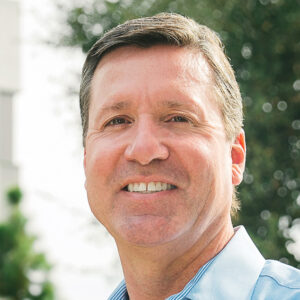Back in April, the California Department of Food and Agriculture (CDFA) and the California State Board of Food and Agriculture released a plan entitled Ag Vision for the Next Decade. While the focus was primarily on climate action, the document did speak to the need to enhance public understanding of agriculture and engage urban audiences.
In his commentary on this plan, Richard Smoley, contributing editor for Blue Book Services, offered the following analysis: “I do not see that the leadership of California agriculture has matured a great deal on this issue than when I started to cover the field 40 years ago.
In other words, Smoley believes our industry is no better at telling its story to the public than we were in the early 1980s.
Having spent a good part of my pre-Western Growers career in various communications roles, I respectfully disagree.
More than seven years ago, Western Growers embarked on a long-term strategy aimed at informing and persuading urban populations and, over time, changing for the better the way their elected representatives view agriculture and public policy. Since then, we have been steadily making inroads with urban audiences, sharing our members’ stories with millions of voters in California and Arizona, and beyond.
Don’t get me wrong. This is not a “mission accomplished” moment. Far from it. But we are making real progress and building a strong foundation for an even broader and increasingly effective platform that can connect and convince people who would otherwise hear only the falsehoods propagated by special interests aligned against agriculture.
Much of this work revolves around social media. Our Facebook page, which has grown to nearly 75,000 followers, has reached more than 38 million people over the last three years with photos, videos and infographics designed to project a realistic and authentic image of our members and the industry. Popular subject matter has included stories about technology, farm labor and good old-fashioned harvest tools. (It appears our urban brothers and sisters love knives!)
Importantly, we’re not just talking to ourselves in an echo chamber. In the early years, most of our Facebook followers predictably came from agricultural regions like Salinas, Fresno, Bakersfield and Santa Maria. Today, due to a combination of viral reach and boosting our message via paid geographic targeting, our top city for followers is Los Angeles, with the major metropolitan areas of Phoenix, San Diego and Sacramento all ranking in the top seven.
The numbers are even more staggering on the traditional media front. This year, through the end of July, print, digital, radio and television coverage. of Western Growers and our members have reached a potential audience of more than seven billion (yes, with a “b”).
At first, this number may seem unfathomable, ludicrous even. But think of all the people reading news online, watching TV, or listening to radio or podcasts every single waking hour of every day. Interestingly, the default habit of scrolling through a phone has given us a great deal of opportunity to tell the story of agriculture to people who may otherwise only encounter fresh produce at their grocery store.
Let me wrap up with this. In his critique of what he calls agriculture’s “half century of public relations failures,” Smoley articulates this point that merits some pause: “A good swath of the public views California agriculture as exploitative and indifferent to the consequences of its own actions,” especially when it comes to the topics of labor and the environment.
If we accept that this perception exists, how do we best get our messages in front of urban audiences, whether on social media or through major news outlets like The New York Times, USA Today, NPR or PBS.
The secret is you. Our members are our best messengers. Public opinion surveys consistently demonstrate that Americans have an extremely high level of trust in farmers. And the best way to get mainstream news organizations to present an accurate, dynamic portrait of the work we do is to let them visit your operations and see them firsthand.
Certainly, an interview with the press via e-mail, phone or Zoom is fine, but the truth of the ag industry cannot be fully realized until a reporter gets their boots dirty. I am confident that any reporter who spends any amount of time with any of our members will walk away with a new and compelling appreciation for the hard work we do, the care with which we do it and the good that flows from our farms to our communities, states and nation.
My team and I know very well that it takes guts to put yourself and your farm out there like that. But we have your back. We have an extraordinarily talented communications team that will work with reporters and provide you with media training and other preparations ahead of a media farm tour. The lessons from these in-person discoveries are the most effective way to share the truths of our industry with the vast urban audiences that elect most legislators.
Together, we can set a new course for how the public perceives agriculture.


